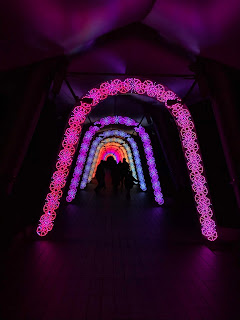Of course, each family celebrates it in their own special way. But there are some common threads.
My family has always eaten soba at 11:30 pm, right before ringing in the new year. Since our son is only 5 and will not be up at midnight (and the fact that I'm not feeling 100%), we decided to eat our soba for lunch.
Known as toshikoshi soba, the tradition of eating soba represents wealth and longevity. With every slurp of the noodles, a person reflects on enjoying a fulfilling life and freeing themselves from the past. They are also looking to gather strength and resilience like the tough buckwheat crop. Most people are also interested in growing their fortune (buckwheat flour was once used by goldsmiths to gather up leftover gold dust).
We headed to a local restaurant, Kosaka, for our soba. They mill their own buckwheat to make the noodles. One of the park moms told me about the restaurant last year. In fact, we ordered our soba from them last year. We didn't want to wait in a long line, so we headed over to the restaurant before 11:30. They offer a limited menu on New Year's Eve, knowing the popularity of their restaurant. My husband translated the menu and we decided on soba in a soup with duck for me, regular dipping soba for our son featuring 100% buckwheat noodles, and dipping soba with tempura for my husband.
Usually we have a super simple meal of soba that we dip into a simple dashi broth with green onions. This soba was much, much fancier. The richness of the duck broth was amazing!
I learned that in Osaka dipping soba is served much dryer and the entire noodle is expected to be dipped. While in Tokyo, the noodles are served with a more concentrated broth. So the noodles are brought to the diner with more water on the noodles and they are only intended to be dipped about 3/4 of the way (the chopsticks don't enter the broth). People from Tokyo say that they enjoy more of the soba flavor in how they eat it. I'm not entirely convinced of this.
While at the restaurant, we ran into one of the other park moms with her family. They, too, were enjoying soba for lunch. They left the restaurant before us. As they left, we sent them off by saying "Yoiotoshiwo!" It means "Enjoy the rest of the year" and "I hope you have a good new year!"
After soba, I went home to take a nap while my husband and son went to the park to play. Several hours passed very quickly as I rested. After returning home, my husband and I prepared our New Year's Eve nabe which featured fish, crab, and oysters this year.
While waiting for dinner time to roll around, we played games and read books.
The nabe was delicious, as usual. We even broke into our special ponzu that we made as part of dinner. It made the nabe even better!
Once dinner was done, my husband turned on the TV. This year marks the 69th edition of NHK's (Japan's PBS) official New Year's Eve celebration show: Kōhaku Uta Gassen. If you are watching television on New Year's Eve in Japan, it is most likely this program. Back in 1963 81.4% of Japanese homes tuned into this specific show! All the major music groups of the past year perform from various locations around Japan. There is also a bit of "the year in review" and even a Guinness Book of World Records record breaking feat. As a person who does not really care for Japanese television, I am really enjoying this show. It is basically a concert with all different styles of music and dancing. And I've lived here long enough that I recognize some of the music.
 |
The previous kendama record was for 119 successful catches in a row.
They beat it with 124, mostly while the guy in the middle sang.
|
Even though the trains run all night tonight (a rarity in Japan), we won't be heading out. For the rest of the evening, my husband I will play games and listen to the TV. We will discuss the past year - reviewing the highlights and fun memories of the past year, and maybe a couple lessons learned as well.
At midnight, we will give each other a kiss. Then we'll head to our son's room to give him a kiss as well before heading to bed.


























































